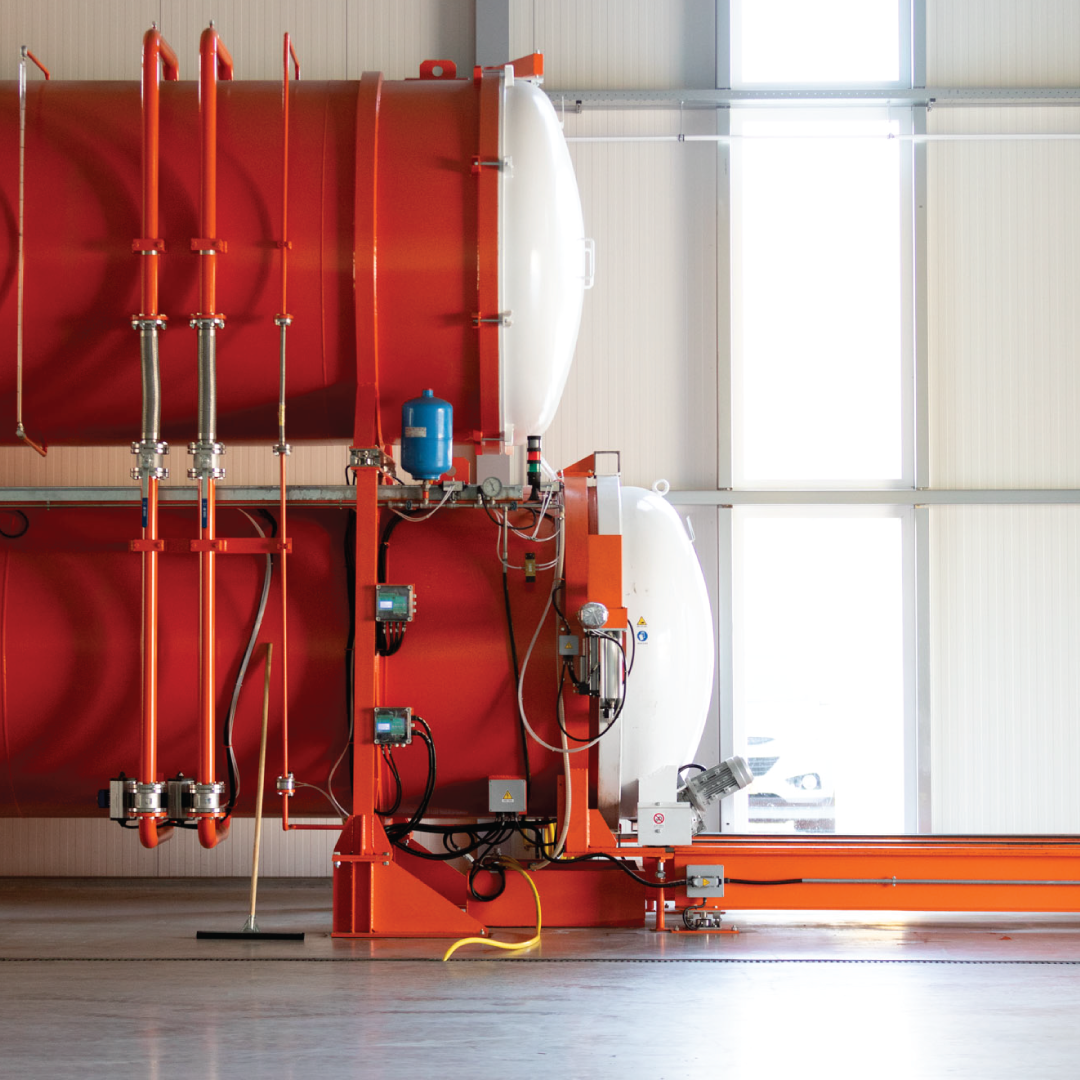The fire classification of façade cladding must comply with the requirements of the Building Works Environment Decree (Bbl). This applies not only to the cladding itself, but to the entire system (cladding, battens, membrane, insulation), which must be tested in accordance with NEN-EN 13501-1. For wooden façades, this means the wood must have at least fire class D, and in specific cases even fire class B.
Fire class testing
The fire class of materials is tested using the Single Burn Item (SBI) test. The commonly used term 'end-use' refers to a comprehensive SBI test of the full façade construction. During the SBI test, fire behavior is determined by means of a fire simulation. An SBI test with a complete wall setup assesses the fire behavior of a combination of materials — for example, a façade system including cavity board, wind barrier, substructure, and cladding wood.
To comply with the Bbl as a supplier, it is sufficient in the Netherlands to provide proof of a successful SBI test for materials that meet the required fire class (B or D). The contractor who installs the complete façade must demonstrate that the full wall system meets the required fire class. This is different from the supplier’s responsibility, which covers only the delivered component — in our case, the cladding. Below are all situations where we can demonstrably supply Fire Class D or B. Want to view the corresponding certificates? Please contact us.
Fire class D at Platowood
As of November 2023, the requirements for wooden façade cladding have been tightened, as established in EU legislation (NEN-EN 14915). Previously, (hydro)thermally modified products, such as Platowood’s wood, could rely on the CWFT table, but this is no longer permitted. It is now up to the manufacturer to demonstrate that the wood complies with Fire Class D. Good to know: Platowood Spruce and Fraké meet Fire Class D. Platowood Poplar is currently being tested.
SBI Platowood Spruce certificate – Closed façade
SBI Platowood Fraké certificate – Closed façade
Fire class B
In certain situations, a higher requirement applies: Fire Class B. This applies to tall buildings: wood used above 13 meters from ground level must meet Fire Class B. It also applies to buildings with a floor intended for occupancy above 5 meters from ground level, where the first 2.5 meters from the ground must also meet Fire Class B. Examples include schools, offices, residential buildings, and theaters.
In collaboration with Hestus, we can treat all our wood with a sustainable fire-retardant process to achieve Fire Class B. Want to know more about the testing method and applications of Hestus-treated wood? Read the Hestus whitepaper.
SBI Platowood Fraké certificate – Closed façade
SBI Platowood Spruce certificate – Closed façade
Correct fire class with Color finish
Test results for Fire Classes B and D apply to untreated wood. If the wood is further treated, for example with a paint system, it must be retested. To comply with Fire Classes B and D, Platowood no longer uses oil-based finishes; water-based stains remain compatible with Fire Classes D and B.
Fire Class D – Fraké with color finish (Declaration of Performance)
Fire Class D – Spruce with color finish (Declaration of Performance)
Fire Class D – Poplar with color finish (Declaration of Performance)
Fire Class B – Fraké with color finish (CE declaration)
Fire Class B – Spruce with color finish (CE declaration)
Fire Class B – Poplar with color finish (CE declaration)
Final note
Compliance with the Bbl is a legal requirement. The client or building owner is ultimately responsible, so always take possible regulatory changes into account.
